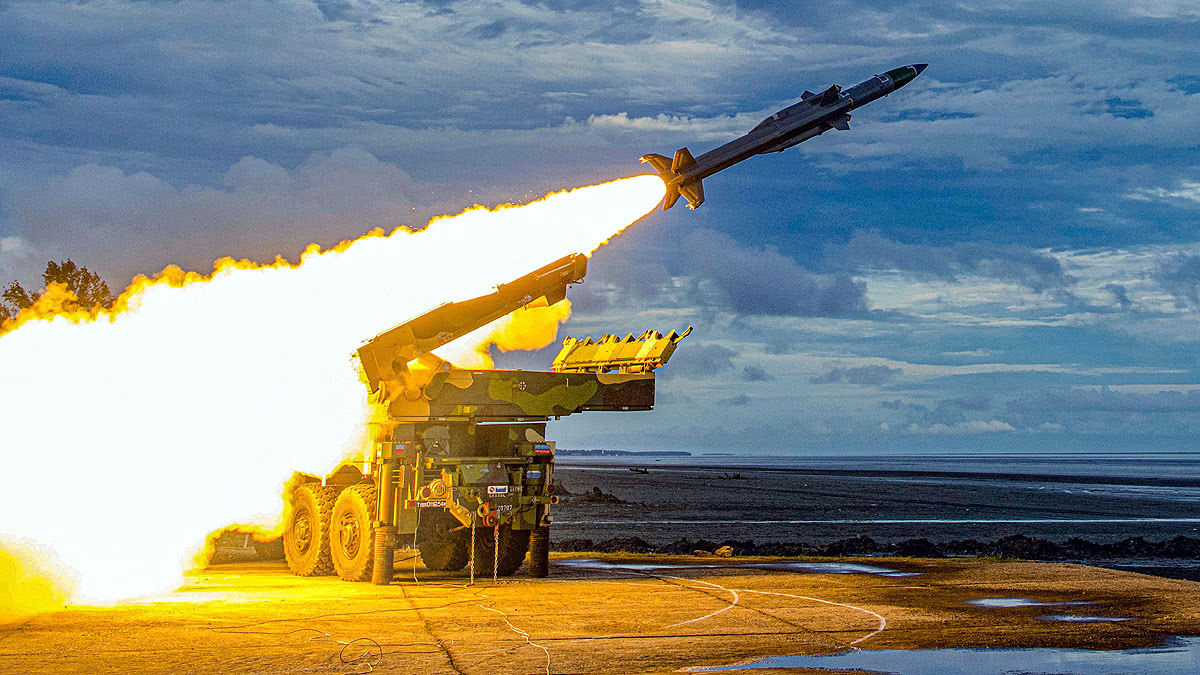All major countries around the world possess ballistic missiles capable of chemical, biological, conventional, or nuclear attacks. India, too, has powerful ballistic missiles, just like its adversaries China and Pakistan. However, to counter these missile threats, India has developed its Brahmastra and has successfully tested it. This is none other than the Anti-Ballistic Missile (ABM) interceptor.
This mighty weapon is known as the Ballistic Missile Defense System (BMDS). The interceptor missile used in this system is called AD-1. This means any ballistic missile with a range exceeding 5000 kilometers can be destroyed above the atmosphere before it hits Indian soil.
Read Also: AD-1 Interceptor Missile: DRDO first launches Prithvi-2 missile, then successfully tests the interceptor missile

Source: aajtak
The second test took place at the Integrated Test Range (ITR) in Chandipur, Odisha. Initially, the Prithvi-2 ballistic missile was used as the enemy target missile. Following this, the AD-1 interceptor missile was launched to pursue it. The target missile was launched from Launch Complex-4, Dhamra, and the interceptor missile from Launch Complex-3 ITR.
Ballistic missiles with a 5,000 km range will be thwarted
This was a phase-2 test. The interceptor missile is a weapon that destroys incoming enemy missiles mid-air. After this test, India is now among the countries with the capability to intercept ballistic missiles with ranges of 5,000 kilometers or more. These countries include the USA, Russia, and Israel.
Read Also: Armenia might buy India's Pralay missile to counter Azerbaijan's LORA missile. Find out the capabilities of both missiles
Understanding India's Anti-Ballistic Missile Program:
DRDO has developed an indigenous anti-ballistic missile program for India, complete with radars and a stockpile of indigenous missiles. In 2006, India successfully tested the Prithvi Air Defense (PADE) system. The anti-ballistic missile was thus named the Prithvi Air Defense (PAD).

Source: aajtak
PAD is an exo-atmospheric interceptor system, meaning the AD-1 interceptor missile will eliminate enemy missiles around 150 kilometers above the atmosphere. The other system, the endo-atmospheric interceptor, destroys enemy missiles at about 80 kilometers below the atmosphere. India possesses both these capabilities.
On December 6, 2007, the Advanced Air Defense (AAD) was successfully tested, intercepting a target missile at an altitude of 30 kilometers. Successful tests followed on April 27, 2014, and May 15, 2016.
Read Also: SAMAR missile deployed in Ladakh… will destroy China's and Pakistan's air attacks mid-air. Discover its power
These missiles might be deployed to protect Delhi and Mumbai:
On January 8, 2020, the Indian Air Force and DRDO appealed to the Indian government to deploy interceptor missiles to protect Delhi and Mumbai from ballistic missile attacks. After securing these two cities, the plan is to protect other major cities and areas with these Brahmastras.

Source: aajtak
Which interceptor systems does India's military possess?
First...
There are two layers in the Ballistic Missile Defense system. One below the atmosphere and the other above it. This means enemy ballistic missiles with a range of 2,000 kilometers can be destroyed 15 to 25 kilometers above Indian soil or 80 to 100 kilometers above it.
Second...
Project Kush... the S-400 layer acquired from Russia. It can destroy ballistic and cruise missiles at altitudes of 150, 250, 350, and 400 kilometers.
Third...
Akash NG and Barak-8 missiles can eliminate incoming enemy missiles at altitudes of 70, 80, and 100 kilometers.
Read Also: Russia's Kalibr cruise missile traveled to Ukraine flying just 50 feet above water... watch the video
Fourth...
The Akash missile layer, capable of hitting targets 25 to 30 kilometers above the ground.
Fifth...
Surface-to-air gun systems. For example, NASAM-2. India has developed VL-SRSAM for this purpose — Vertical Launch Short Range Surface to Air Missile.
Sixth...
Phase-1 anti-ballistic missile systems, which are interceptor missiles capable of destroying ballistic missiles with a range of 2,000 kilometers. In Phase-2, this range increases to 5,000 kilometers.

Source: aajtak




